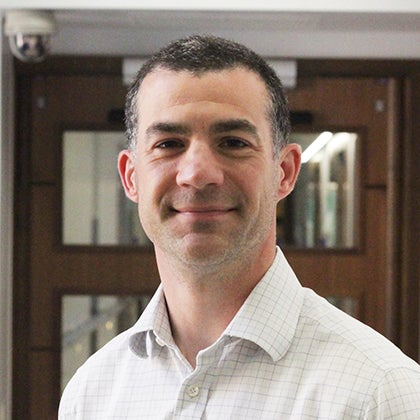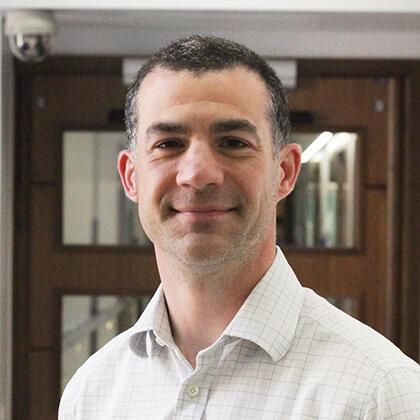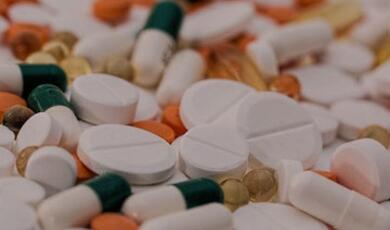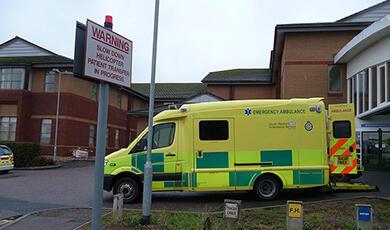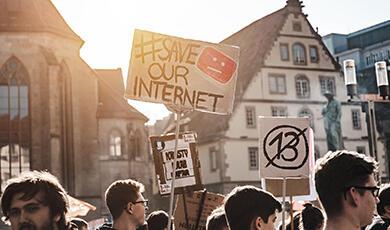Are We Too Reliant on Medical Imaging?
Share
- Details
- Text
- Audio
- Downloads
- Extra Reading
Imaging is used every day in medical healthcare, and the likelihood is that if you go to hospital that you will receive an X-ray, ultrasound or CT scan. With increasing reliance on complex imaging and the NHS now at breaking point, this lecture asks whether we have become too reliant on imaging and if so, how that manifests in today’s healthcare.
This lecture assesses the potential advantages and disadvantages of such a system and what the potential solutions might be.
Already watched the lecture? Help us design future events by taking our survey.
Download Text
Are We Becoming Too Dependent on Medical Imaging?
Professor Owen Arthurs
4th October 2022
Imaging is the cornerstone of modern medical healthcare, and almost all of us will undergo medical imaging at some point in our lifetime. Many of us have been scanned by X-rays, Ultrasound or CT scans already, some of us before we were born by antenatal ultrasound (in-utero).
Radiology is being used earlier and more extensively in the diagnostic pathway, is at the heart of a growing number of screening programmes and health checks, and the use of minimally-invasive techniques involving interventional radiology is soaring.
With increasing reliance on complex imaging and the NHS now at breaking point, this lecture asks whether we have become too reliant on imaging and what today’s healthcare provision looks like. This lecture discusses the potential advantages and disadvantages of relying on such a high-tech system and what the potential solutions might be.
Background
There is no doubt that imaging techniques that provide an accurate picture of what is going on inside your body are one of the most useful advances in modern medicine. In an instant, these techniques can determine which abnormalities are present, how severe a medical condition might be, and whether there are any complications. Highly technical and requiring skilled professionals, common medical imaging now includes X-rays, CT scans, nuclear medicine scans, MRI scans and ultrasound.
Imaging now allows for early detection of cancers, improved treatment to find and target cancers, fewer unnecessary surgeries, better ways of assessing response to therapy, and innovative ways to access abnormalities within the body without surgery.
However, providing a comprehensive imaging service to all patients has significant resource implications, and there may a risk of becoming over reliant on medical imaging. Whilst technology has greatly improved, access to such technology is not universal, and may be inadvertently restricted. So what types of problem are likely to require imaging, and how do we make sure that the right patients are getting the right test at the right time, i.e. are we using it judiciously enough?
Ways That Modern Imaging is Used
Diagnostic Imaging
Diagnostic imaging means using imaging as one of the first tools to investigate a new clinical problem. This could be a straight forwards X-ray to detect a broken bone in suspected traumatic injury, an ultrasound of the heart (called an echocardiogram) in a suspected heart problem, a CT scan of the head in suspected head injury, or an MRI of a painful limb or joint. Thanks to high quality imaging, many diseases are diagnoses rapidly at the point of entry into the NHS, and can help direct the most appropriate management efficiently.
The main infrastructure required to provide such an imaging service are the technology in terms of machinery, equipment and maintenance, a trained workforce to run the machine (radiographers or technologists), medical staff to assess the images (radiologists) and the administration required to organise and run the service.
It is critically important that diagnostic imaging is available to everyone at the point of care, and in many circumstances is governed by waiting targets, e.g., 2 week cancer pathways.
Imaging as Part of Treatment – Interventional Radiology
Imaging can not only detect disease, but also be used to take samples of tissue under imaging guidance, or direct treatments towards the disease, sometimes eradicating the need for an open surgical procedure. Interventional radiology is the discipline of inserting various small tools such as catheters and wires into the body, and using real-time imaging (typically X-rays, Ultrasound or CT) to guide these instruments to a site of abnormality – where they may be used to sample, remove or treat an abnormality. Often the large blood vessels of the body, entered through the groin, are used as pathways to allow access to the heart, head or gut to perform minimally invasive surgical procedures that would otherwise have required open surgery. Examples include taking a tissue sample of the kidney under ultrasound guidance or inserting a drain into a fluid collection around the lungs or bowel to drain the abnormality.
Interventional radiology also allows for the removal of abnormalities in an urgent care setting, such as endovascular treatment of stroke, where a blood clot in the brain can be removed (thrombectomy) or liquefied (thrombolysis) via a catheter inserted from the groin. Metallic stents to keep narrowed blood vessels opened can also be inserted into the neck or heart vessels via the same entry point. IR procedures have many clear benefits to the patient, not only related to the procedure (no open surgery, reduced risk and reduced pain) but also better recovery (less time in hospital, faster recovery) and it may be suitable for some patients who cannot undergo the risks of an open operation. Whilst IR procedures are typically shorter and more efficient overall for the patient, they can be labour and technology intensive for the Imaging departments that offer them.
Follow Up Imaging
For each problem that imaging identifies, several further scans may be required.
This may be to diagnose the problem in more detail, perhaps using a more complex or detailed technique, or using different contrast media (injections) to determine the behaviours of the abnormality in more detail. Examples would include finding a liver mass on ultrasound which requires an MRI scan using an agent taken up by liver cells to determine the nature of the mass.
Imaging is also used extensively in post-operative imaging, such as confirming that the entirety of a cancer has been removed or checking the alignment of a fracture in a cast.
So a single diagnostic scan can easily mean further scans and tests. As many of these tests show disease improvement, or remaining stable over long periods of time, in retrospect some may assume that these were unnecessary. If there were a better way of determining which patients’ diseases would recur or progress, then some of those scans could be redundant.
Surveillance scanning is a form of monitoring for disease. Examples would include checking a patient with a known disease, for example a small benign lump which is unlikely to spread but useful to check on an annual basis or checking a patient who has had the disease removed to ensure that it has not come back.
Screening
Screening is a different form of imaging: this is scanning an asymptomatic population in the hope that diseases will be detected in their early stages before it’s too late to change the course of the disease. Widespread imaging examples include breast cancer screening using specialised X-rays called mammograms.
Whilst screening undoubtedly saves many lives (estimated 9,000 per year in UK), and has been shown to be effective over a number of different settings, there are inherent problems in screening related to so-called “false negatives” and “false positives”.
False negatives are missed cancers: cancers which may be there but too small to see or the tests too inaccurate to detect. These lead to patients being falsely reassured that they do not have a disease when in fact they do; these can be considered mistakes of the test. False positives are the opposite: patients informed that they have a diagnosis or cancer which turns out to be wrong. These clearly lead to patient anxiety, and often unnecessary tests to characterize the disease further – usually involving imaging. For example a benign lump in the breast detected by screening may still need an ultrasound, MRI and biopsy to prove that it is not a cancer.
Data from CRUK suggests that for every 1000 women aged 50 – 70 undergoing breast cancer screening, more women will be diagnosed with cancer (75 vs 58 without screening), and because these are detected earlier, fewer women will die of their cancer (5 lives will be saved due to screening), and more will be treated and survive their cancer, but some of these survivors will effectively have been over-diagnosed with cancers that would not have caused them any harm. This may be as low as 3 in 1000 or as high as 17 in 1000: whilst this is relatively low risk to a population, if you are one of the individuals who this affects then is becomes 100% of your experience.
Incidental Findings
Incidental findings is where unexpected problems are detected by a scan, usually separate to the reason that the scan was performed. This can be serendipitous, and extremely helpful, or alternatively may be largely unhelpful. A serendipitous example would be finding a breast cancer in a female patient undergoing a CT scan for a suspected heart problem.
More commonly, some abnormalities that are found incidentally can be non-harmful and may never cause any problems to the patient, but may cause anxiety and distress in finding out whether they are benign, and in the consequential surveillance. For example, up to 10% of people have incidental, asymptomatic small adenomas in their adrenal glands, with a tiny risk of malignancy around 1 in a million. Almost 30% of patients undergoing an abdominal CT scan for other reasons (e.g. trauma, or bowel cancer) will discover that they have an adrenal “incidental-oma”. When such an adenoma is identified, whilst it is reasonable to assume that it has no clinical significance, not mentioning it would be negligent, but mentioning it may require a biopsy to confirm that it is benign or surveillance scanning to check that it doesn’t change over time. It could be argued that not knowing that it was there would have been better for both the patient and medical profession!
Imaging Burden
Recent years have seen a consistent, ongoing growth in demand for radiology services. In 2012/13, there were just over 35 million radiological examinations performed across the NHS in England. By 2018/19, that had risen to over 43 million (GIRFT data).
The fastest growth has been in the more complex modalities – MRI and CT. In April 2012, there were 250,000 CT scans undertaken a month; by March 2019, this had doubled.
For MRI, the increase over the same period was from around 170,000 a month to 320,000.
There seems little doubt that this pattern of growth will continue (GIRFT data).
Clearly, increased use of imaging is the right direction of travel for the NHS. But equally clearly to those who work in the service, and to those who work in other specialties that rely on diagnostic imaging, radiology is struggling to keep pace with this demand.
The result is that some patients are waiting too long for essential imaging. Over half of patients referred for MRI or ultrasound wait more than 14 days for the test to take place. There is often a further delay before the images are assessed by a Radiologist, in hospitals that are under-staffed or unable to access the necessary expertise.
What Did COVID-19 Tell Us?
The COVID-19 pandemic had a dramatic effect on the UK healthcare system, including on Imaging departments and practices. At the beginning of full lockdown, on 23 March 2020, elective surgery and imaging effectively stopped overnight, and emergency admissions became either immediate life-threatening surgical emergencies or COVID-19 related. Busy departments became temporarily empty, and some imaging staff were redeployed to look after COVID positive patients.
Within radiology services, the combined effects of infection control measures, social distancing between staff and patients, staff sickness, and deep cleaning where patients were COVID positive, lead to a reduction in capacity and patient throughput or turnover. The effects of the pandemic on COVID positive patients has been well rehearsed elsewhere and will not be discussed in more detail here, but 2 years on we are now beginning to realise the negative effects of the pandemic on COVID negative patients, and we can ask the question: who didn’t get scanned during the pandemic?
Some of those problems are only just coming to light, and it may take several years to fully realise the impact of the pandemic on patients without COVID. Significantly fewer people attended for cancer screening, which has lead to a 65% reduction in new breast cancer diagnoses. Similarly, fewer people underwent heart or bowel operations. But those diseases have not gone away, they now linger in the community un-diagnosed and undetected. Most services are back up to 75% capacity or more, so this problem will only worsen as time goes on. In primary care, remote consultations became the normal way of communicating, but with GPs unable to assess patients face to face, anecdotally this may have led to an increase in imaging requests after online consultations. Whilst the RCR has robust guidelines (the iRefer system) to provide a clinical decision support tool to help best use of limited resources, it is not yet being used nationwide.
In a study of Imaging activity in our own children’s hospital, Great Ormond Street Hospital for Children NHS Foundation Trust, in-patient activity did not drop significantly throughout the pandemic, meaning that the sickest children needing beds still got access to the best healthcare available, even though very few children suffered directly from COVID-19 related disease. However, out-patient activity, which could be considered surveillance or monitoring, dropped significantly, down 27% overall and down 40% during the most severe restrictions (Tier 4 lockdown). Instead of seeing almost 68,000 patients per year, we only saw around 50,000 patients, with an estimated 18,000 “missed” outpatient visits. We do not know the answers to the questions: who were those children and which diseases have we missed? We have calculated that we would need to increase our Imaging capacity by more than 10% to try to see all these patients, but even if we did so, it would take us around 2.5 years to “catch up” on all of these missed appointments. It’s not clear whether we are able to, or need to, recover this activity.
Where Are We Now, Post Pandemic 2022?
Whilst it is difficult to accurately identify which patients have directly suffered and their disease progressed during the pandemic because of missing imaging appointments, the overall disease burden in the population has increased. This can be appreciated by thinking about Quality of Life (QoL) losses: for example in patients waiting for a hip operation: whilst the NHS usually performs 330 hip replacements per day, the effect of the pandemic was that 58,000 people waited an additional 25 weeks for a hip replacement. This has two effects: one is the significant reduction in QoL whilst waiting, and the second is the overall reduction in QoL because delayed operations may be less effective, which taken together do not paint a rosy picture for those still waiting to be seen.
Overall, there are an additional 1 million people waiting for MRI or CT scans in September 2022 (1.6 million) compared to 10 years ago (0.6 million; GIRFT data).
Potential Solutions
There are some obvious answers to this challenge: more staff and more equipment. Numerous reports have highlighted the shortfalls in the numbers of both radiologists and radiographers; in fact, most trusts are short staffed across the entire radiology team, with clear consequences for meeting demand. As the UK already has one of the lowest numbers of doctors and nurses per head of population and one of the lowest numbers of CT and MRI scanners per head of population which has not kept pace over the last 10 years, working on existing demand, let alone the backlog, represents a huge challenge. Whilst imaging services are working hard to restoring capacity after the pandemic, perhaps the chronic underfunding of radiologists, radiographers and imaging equipment means that we will need to look elsewhere for a solution.
Will computers and innovation come to our rescue ? Will machine learning and artificial intelligence make radiologists redundant, i.e. computers will take over image interpretation? Several pioneers in AI predicted exactly that, with Geoffrey Hinton predicting in a 2016 infamous lecture that “it is just completely obvious that within 5 years, deep learning will do better than radiologists” (https://www.youtube.com/watch?v=2HMPRXstSvQ). Thus far, no radiologists have been replaced by AI algorithms, and whilst it is becoming clear that some computer assistance is welcome and helpful in image interpretation, currently there are many limitations to what AI is able to achieve: fooling an AI algorithm is still too easy.
For example deep neural networks can be trained to tell us where particular limb bone fractures might be, but when faced with an unfamiliar imaging they can struggle and make inappropriate diagnoses. Deep neural networks can be excellent at pattern recognition but easily fooled by small changes in the image or see patterns where none exist. Our understanding of how these programs work and their evolution into more sophisticated techniques will be the work of the next 10 years. Perhaps AI algorithms are really better placed to tell us which people or patients have risk factors for certain diseases, and could help streamline our patient care pathways, including the more efficient running of a clinic or workflow prioritisation, rather than image interpretation and diagnosis per se. Patients remain sceptical of diagnoses made purely by computer, but are much more comfortable with the idea that computers give doctors “back-up to ensure that nothing is missed”.
So, Have We Really Become Too Reliant on Medical Imaging?
This lecture provides a commentary on the current state of play of UK imaging resources and the disease burden in the population: our already under-resourced national Imaging service has suffered before and during the COVID-19 pandemic, and we will struggle to rectify the huge backlog of patients needing to be seen.
Whilst emergency and urgent healthcare will always take precedence, the chronic disease burden within the population will only increase without the imaging, surgical and medical capability to take on the growing demand.
There appears to be no easy fix but we continue to strive to provide the right test for the right person at the right time, acknowledging the limitations of the system in which we work, and look forwards to innovative solutions being implemented in the near future.
@ Professor Arthurs, 2022
References and Further Reading
Halliday K, Maskell G, Beeley L, Quick E. GIRFT Programme National Specialty Report: Radiology. The Royal College of Radiologists, November 2020. NHS PAR281. Download from: www.GettingItRightFirstTime.co.uk
The Royal College of Radiologists. Clinical Radiology UK Workforce census 2020 report. London: The Royal College of Radiologists, 2021. Ref BFCR (21)3
Cancer Research UK Breast cancer statistics https://www.cancerresearchuk.org/health-professional/cancer-statistics/statistics-by-cancer-type/breast-cancer
Wegwarth O, Schwartz LM, Woloshin S, Gaissmaier W, Gigerenzer G. Do physicians understand cancer screening statistics? A national survey of primary care physicians in the United States. Ann Intern Med. 2012 Mar 6;156(5):340-9. doi: 10.7326/0003-4819-156-5-201203060-00005. PMID: 22393129.
Bhangu A; RIFT Study Group, West Midlands Research Collaborative. Evaluation of appendicitis risk prediction models in adults with suspected appendicitis.
Br J Surg. 2020 Jan;107(1):73-86. doi: 10.1002/bjs.11440.
de Koning HJ, van der Aalst CM, de Jong PA, et al. Reduced Lung-Cancer Mortality with Volume CT Screening in a Randomized Trial. N Engl J Med. 2020 Feb 6;382(6):503-513. doi: 10.1056/NEJMoa1911793.
Georgieva M, Rennert J, Brochhausen C, et al. Suspicious breast lesions incidentally detected on chest computer tomography with histopathological correlation. Breast J. 2021 Sep;27(9):715-722. doi: 10.1111/tbj.14259.
Langan D, Shelmerdine S, Taylor A, et al. Impact of the COVID-19 pandemic on radiology appointments in a tertiary children's hospital: a retrospective study. BMJ Paediatr Open. 2021 Aug 11;5(1):e001210. doi: 10.1136/bmjpo-2021-001210.
Krelle H, Barclay C, Tallack C, for The Health Foundation. Waiting for care: Understanding the pandemic’s effects on people’s health and quality of life. August 2021 https://www.health.org.uk/publications/long-reads/waiting-for-care
Hinton G. On Radiology. Machine learning and the Market for Intelligence. https://www.youtube.com/watch?v=2HMPRXstSvQ
Winder M, Owczarek AJ, Chudek J, Pilch-Kowalczyk J, Baron J. Are We Overdoing It? Changes in Diagnostic Imaging Workload during the Years 2010-2020 including the Impact of the SARS-CoV-2 Pandemic. Healthcare (Basel). 2021 Nov 16;9(11):1557. doi: 10.3390/healthcare9111557
Westbrook JI, Braithwaite J, McIntosh JH. The outcomes for patients with incidental lesions: serendipitous or iatrogenic? AJR Am J Roentgenol. 1998 Nov;171(5):1193-6. doi: 10.2214/ajr.171.5.9798845.
Heaven D. Why deep-learning AIs are so easy to fool. Nature. 2019 Oct;574(7777):163-166. doi: 10.1038/d41586-019-03013-5.
Maroni R, Massat NJ, Parmar D, Dibden A, Cuzick J, Sasieni PD, Duffy SW. A case-control study to evaluate the impact of the breast screening programme on mortality in England. Br J Cancer. 2021 Feb;124(4):736-743.
Dickson J. Impact of COVID-19 on imaging services in the UK. Hospital Healthcare Europe. 14 Dec 2020. https://hospitalhealthcare.com/latest-issue-2020/covid-focus/impact-of-covid-19-on-imaging-services-in-the-uk/
Tallack C, Krelle H for The Health Foundation. 6 December 2021. What has happened to non-COVID mortality during the pandemic ? https://www.health.org.uk/publications/long-reads/what-has-happened-to-non-covid-mortality-during-the-pandemic
References and Further Reading
Halliday K, Maskell G, Beeley L, Quick E. GIRFT Programme National Specialty Report: Radiology. The Royal College of Radiologists, November 2020. NHS PAR281. Download from: www.GettingItRightFirstTime.co.uk
The Royal College of Radiologists. Clinical Radiology UK Workforce census 2020 report. London: The Royal College of Radiologists, 2021. Ref BFCR (21)3
Cancer Research UK Breast cancer statistics https://www.cancerresearchuk.org/health-professional/cancer-statistics/statistics-by-cancer-type/breast-cancer
Wegwarth O, Schwartz LM, Woloshin S, Gaissmaier W, Gigerenzer G. Do physicians understand cancer screening statistics? A national survey of primary care physicians in the United States. Ann Intern Med. 2012 Mar 6;156(5):340-9. doi: 10.7326/0003-4819-156-5-201203060-00005. PMID: 22393129.
Bhangu A; RIFT Study Group, West Midlands Research Collaborative. Evaluation of appendicitis risk prediction models in adults with suspected appendicitis.
Br J Surg. 2020 Jan;107(1):73-86. doi: 10.1002/bjs.11440.
de Koning HJ, van der Aalst CM, de Jong PA, et al. Reduced Lung-Cancer Mortality with Volume CT Screening in a Randomized Trial. N Engl J Med. 2020 Feb 6;382(6):503-513. doi: 10.1056/NEJMoa1911793.
Georgieva M, Rennert J, Brochhausen C, et al. Suspicious breast lesions incidentally detected on chest computer tomography with histopathological correlation. Breast J. 2021 Sep;27(9):715-722. doi: 10.1111/tbj.14259.
Langan D, Shelmerdine S, Taylor A, et al. Impact of the COVID-19 pandemic on radiology appointments in a tertiary children's hospital: a retrospective study. BMJ Paediatr Open. 2021 Aug 11;5(1):e001210. doi: 10.1136/bmjpo-2021-001210.
Krelle H, Barclay C, Tallack C, for The Health Foundation. Waiting for care: Understanding the pandemic’s effects on people’s health and quality of life. August 2021 https://www.health.org.uk/publications/long-reads/waiting-for-care
Hinton G. On Radiology. Machine learning and the Market for Intelligence. https://www.youtube.com/watch?v=2HMPRXstSvQ
Winder M, Owczarek AJ, Chudek J, Pilch-Kowalczyk J, Baron J. Are We Overdoing It? Changes in Diagnostic Imaging Workload during the Years 2010-2020 including the Impact of the SARS-CoV-2 Pandemic. Healthcare (Basel). 2021 Nov 16;9(11):1557. doi: 10.3390/healthcare9111557
Westbrook JI, Braithwaite J, McIntosh JH. The outcomes for patients with incidental lesions: serendipitous or iatrogenic? AJR Am J Roentgenol. 1998 Nov;171(5):1193-6. doi: 10.2214/ajr.171.5.9798845.
Heaven D. Why deep-learning AIs are so easy to fool. Nature. 2019 Oct;574(7777):163-166. doi: 10.1038/d41586-019-03013-5.
Maroni R, Massat NJ, Parmar D, Dibden A, Cuzick J, Sasieni PD, Duffy SW. A case-control study to evaluate the impact of the breast screening programme on mortality in England. Br J Cancer. 2021 Feb;124(4):736-743.
Dickson J. Impact of COVID-19 on imaging services in the UK. Hospital Healthcare Europe. 14 Dec 2020. https://hospitalhealthcare.com/latest-issue-2020/covid-focus/impact-of-covid-19-on-imaging-services-in-the-uk/
Tallack C, Krelle H for The Health Foundation. 6 December 2021. What has happened to non-COVID mortality during the pandemic ? https://www.health.org.uk/publications/long-reads/what-has-happened-to-non-covid-mortality-during-the-pandemic
This event was on Tue, 04 Oct 2022
Support Gresham
Gresham College has offered an outstanding education to the public free of charge for over 400 years. Today, Gresham College plays an important role in fostering a love of learning and a greater understanding of ourselves and the world around us. Your donation will help to widen our reach and to broaden our audience, allowing more people to benefit from a high-quality education from some of the brightest minds.


 Login
Login
